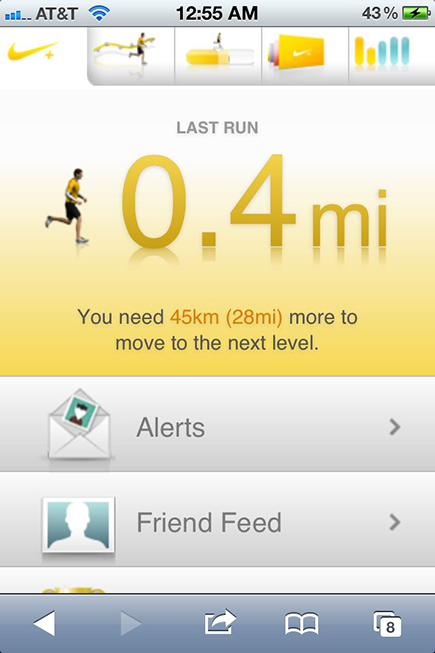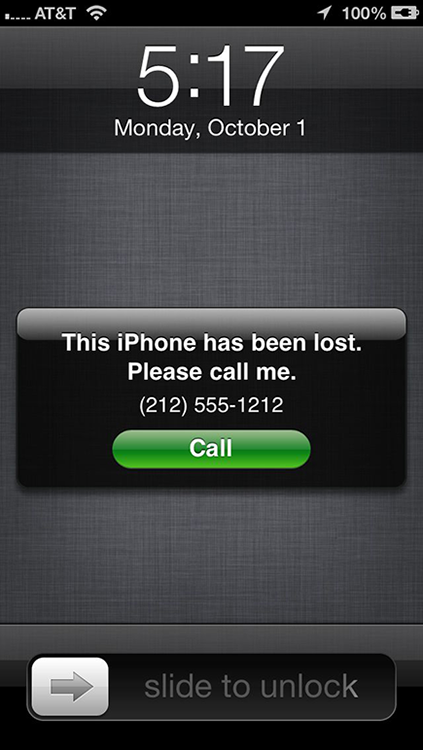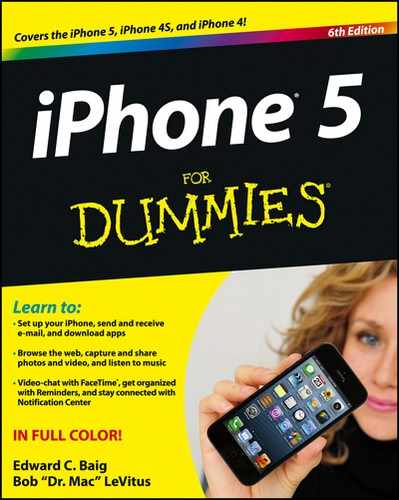Phoning In More Settings
We cover most of the remaining settings in earlier chapters devoted to e-mail, calendars, music, photos, Safari, and e-mail. Still, we didn’t get to a few other settings — ’til now.
iCloud
The iCloud settings are where you let iCloud know which of your apps, plus Photo Stream, ought to be turned on or off. You can also check on your storage and iCloud Backup options here, and if worse comes to worst, delete your iCloud account.
In Twitter settings, you can add a new Twitter account and update your contacts so that Twitter uses their e-mail addresses and phone numbers to automatically add their Twitter handles and photos. You also can choose yay or nay on whether you can use various apps with Twitter.
Most of us know Facebook as a great service to help you stay in touch with relatives, associates, and old pals, rekindle those relationships, and make new friends. But some people collect Facebook friends like baseball cards. If it seems like you’re acquainted with all 1 billion or so members of the mammoth social network, we know what you mean.
Fortunately, Apple kindly organizes your Facebook relationships on the iPhone. If you turn on the Calendar and Contacts settings under Facebook settings on the iPhone, your Facebook friends automatically populate your Contacts list, complete with their profile picture as well as their e-mail addresses and phone numbers (if they made them public on Facebook). Birthdays and calendar appointments appropriately turn up in the iPhone calendar app.
Think of these Facebook entries as live synced contact entries. If a person changes his or her phone number and e-mail address on Facebook, that change will be reflected on your iPhone, provided you have Wi-Fi or cellular coverage or the next time you do. And if your friends de-friend you — what did you do, anyway? — their contact info will disappear altogether.
If the iPhone can correctly match a Facebook friend entry with an existing contact entry, it will try to unify that contact under a single view. Meanwhile, the Update All Contacts option under Facebook settings on the iPhone serves a slightly different purpose. It tries to add Facebook profile information to your contacts who are on Facebook but are not among your Facebook friends.
Sorting and displaying contacts
Do you think of us as Ed and Bob or Baig and LeVitus? The answer to that question will probably determine whether you choose to sort your Contacts list alphabetically by last name or first.
Tap Mail, Contacts, Calendars; scroll down to the Contacts section; and peek at Sort Order. Then tap Last; First; or First, Last.
You can also determine whether you want to display a first name or last name first. Tap Display Order, and then choose First; Last; or Last, First.
In My Info, make sure your own name is chosen so that Siri knows where you live, among other reasons.
While you’re at it, check out the Default Account setting under the Contacts settings. If you create new contacts outside a specific account, the default account you select here is the account to which the new contact will be added.
Nothing phone-y about these settings
In Chapter 4, we tip our hand and indicate that we save a few more phone tricks — those found in Phone settings — for this chapter.
Tap Phone now to review some of the choices we don’t get to in that chapter. Be aware that you have to scroll down the screen to find Phone settings.
Call forwarding
If you expect to spend time in an area with poor or no cell phone coverage, you may want to temporarily forward calls to a landline or other portable handset. Here are the simple steps:
1. On the Settings screen, tap Phone⇒Call Forwarding.
2. Tap to turn on Call Forwarding.
3. Use the virtual keypad to enter the number where you want incoming calls to ring.
4. Tap the Call Forwarding button to return to the main Call Forwarding screen.
To change the forwarding number, tap the circle with the X in the Phone Number field to get rid of the old number, and then enter a new one.
Remember to turn off Call Forwarding to receive calls directly on your iPhone again.
Call waiting
Tap the Call Waiting button to turn the feature on or off. If Call Waiting is off and you’re speaking on the phone, the call is automatically dispatched to voicemail.
Show my Caller ID
Don’t want your name or number displayed on the phone you’re calling? Make sure to tap Show My Caller ID and turn off the setting. If privacy isn’t a concern, you can leave this setting on.
TTY
Folks who are hearing impaired sometimes rely on a teletype, or TTY, machine, to hold conversations. You can use the iPhone with standard TTY devices by plugging a cable from the TTY device into an optional $19 iPhone TTY adapter, and then plugging the adapter into the iPhone. Make sure the TTY setting on the phone is turned on.
SIM locking
The tiny SIM (Subscriber Identity Module) card inside your iPhone holds your phone number and other important data. Tap to turn on SIM PIN and enter a password with the keypad. Then, if someone gets hold of your SIM, he or she can’t use it in another phone without the password.
Change voicemail password
This setting is straightforward enough. Tap Change Voicemail Password, type your old 4-digit password, and tap Done. Then type the new password and tap Done twice. Your new password is saved until, and if, you change it again.
Carrier services
A major difference between the iPhone and all the other Apple products you might buy is that you enter into a relationship with not only Apple but also the phone company when you have an iPhone. On your AT&T iPhone, for example, you can tap AT&T Services and then tap any of the following options for a shortcut phone call:
![]() Check Bill Balance: The phone dials *225# and, if all goes according to plan, you receive a text message with the due date and sum owed. This type of text message isn’t counted against your messaging allotment.
Check Bill Balance: The phone dials *225# and, if all goes according to plan, you receive a text message with the due date and sum owed. This type of text message isn’t counted against your messaging allotment.
![]() Call Directory Assistance: The phone dials 411.
Call Directory Assistance: The phone dials 411.
![]() Pay My Bill: The iPhone dials *729 and you’re connected to an automated voice system. You can pay your bill with a checking account, debit card, or credit card by following the voice prompts.
Pay My Bill: The iPhone dials *729 and you’re connected to an automated voice system. You can pay your bill with a checking account, debit card, or credit card by following the voice prompts.
 You’re billed for phone service from AT&T, not from Apple. Of course, charges for any music or other content purchased in iTunes from your computer are paid to Apple through whichever credit card you have on file, as with any iPod.
You’re billed for phone service from AT&T, not from Apple. Of course, charges for any music or other content purchased in iTunes from your computer are paid to Apple through whichever credit card you have on file, as with any iPod.
![]() View My Data and Msg: Find out if you’re getting close to your data limits, messaging limits, or both. An incoming text supplies the answer. The phone dials *3282#.
View My Data and Msg: Find out if you’re getting close to your data limits, messaging limits, or both. An incoming text supplies the answer. The phone dials *3282#.
![]() View My Minutes: This time, *646# is called. You again receive a text reply that doesn’t count against your messaging allotment.
View My Minutes: This time, *646# is called. You again receive a text reply that doesn’t count against your messaging allotment.
![]() Voice Connect: The iPhone dials *08 to connect you to automated news, weather, sports, quotes, and more. Just bark out the kind of information you’re looking for, such as finance, and follow voice prompts for stock quotes and business news, for example. Or say “Sports” and follow the voice prompts to see the latest scores of your favorite team. Of course, in many instances Siri can deliver similar information.
Voice Connect: The iPhone dials *08 to connect you to automated news, weather, sports, quotes, and more. Just bark out the kind of information you’re looking for, such as finance, and follow voice prompts for stock quotes and business news, for example. Or say “Sports” and follow the voice prompts to see the latest scores of your favorite team. Of course, in many instances Siri can deliver similar information.
Not all AT&T Services options make a phone call. If you tap the AT&T My Account button, Safari opens an AT&T account management page on the web.
Of course, if you have an iPhone from Verizon, Sprint, or another carrier, you’ll see different shortcuts on their respective devices.
Nike + iPod
You’re passionate about fitness. You’re equally passionate about music. Apple has teamed up with the folks at Nike on a $29 wireless sports kit that lets runners place a sensor inside a Nike sneaker that can wirelessly communicate with a receiver connected to an iPod Nano. There’s no need for a separate receiver in the iPhone; it can communicate with the Nike + sensor. As runners dash off, they can track time, distance, and calories burned on the iPhone (or Nano), receive vocal feedback, and upload results to a Nike website. Runners can even play a select “power song” on the iPod for that last push when they’re feeling exhausted.
When you turn on the Nike + app in Settings, your iPhone can record every step you make. You don’t have to connect a separate receiver, as you do on the Nano. By tapping Go to Nike + in Settings, you can see how well (or not) you’re doing, as shown in Figure 14-10.

Figure 14-10: Born to run with your iPhone.
Find My iPhone
We hope you never have to use the Find My iPhone feature — though we have to say that it’s pretty darn cool. If you inadvertently leave your iPhone in a taxi or restaurant, Find My iPhone may just help you retrieve it. It helped Ed retrieve a phone he left on a bus.
To turn on Find My iPhone, open Settings and tap iCloud. (You get an iCloud e-mail account when you join the free iCloud service.) Refer to Chapter 12 to see how to add an e-mail account to the iPhone. Make sure the Find My iPhone setting is turned on.
Now suppose that you lost your phone — and we can only assume that you’re beside yourself. Log in to your iCloud account from any browser on your computer. Click Find My iPhone.
Assuming that your lost phone is turned on and in the coverage area, its general whereabouts should appear on a map, as shown in Figure 14-11. In our tests, Find My iPhone found our iPhones quickly.

Figure 14-11: Locating a lost iPhone.
The truth is that even seeing your iPhone on a map may not help you much, especially if the phone is lost somewhere in midtown Manhattan. Take heart. At the Find My iPhone site, click Lost Mode to bang out a plea to the Good Samaritan whom you hope picked up your phone. The message appears on the lost iPhone’s screen. You’ll get to enter a phone number so that the person can reach you, as shown in Figure 14-12.

Figure 14-12: An appeal to return the phone.
To get someone’s attention, you click Play Sound to sound an alarm that plays for two minutes, even if the phone was in silent mode. Hey, that alarm may come in handy if the phone turns up under a couch in your house.
After all this labor, if the phone is seemingly gone for good, click Erase iPhone at the site to delete your personal data from afar and return the iPhone to its factory settings. And, if you ever get your phone back afterward, you can always restore the information with an iTunes or iCloud backup on your PC or Mac.
We trust that you control freaks are satisfied with all the stuff you can manage in Settings. Still, the iPhone may not always behave as you want. For the times when things get out of control, we highly recommend Chapter 16.


